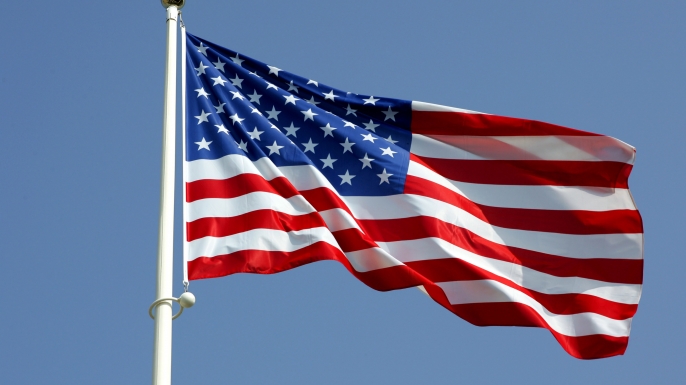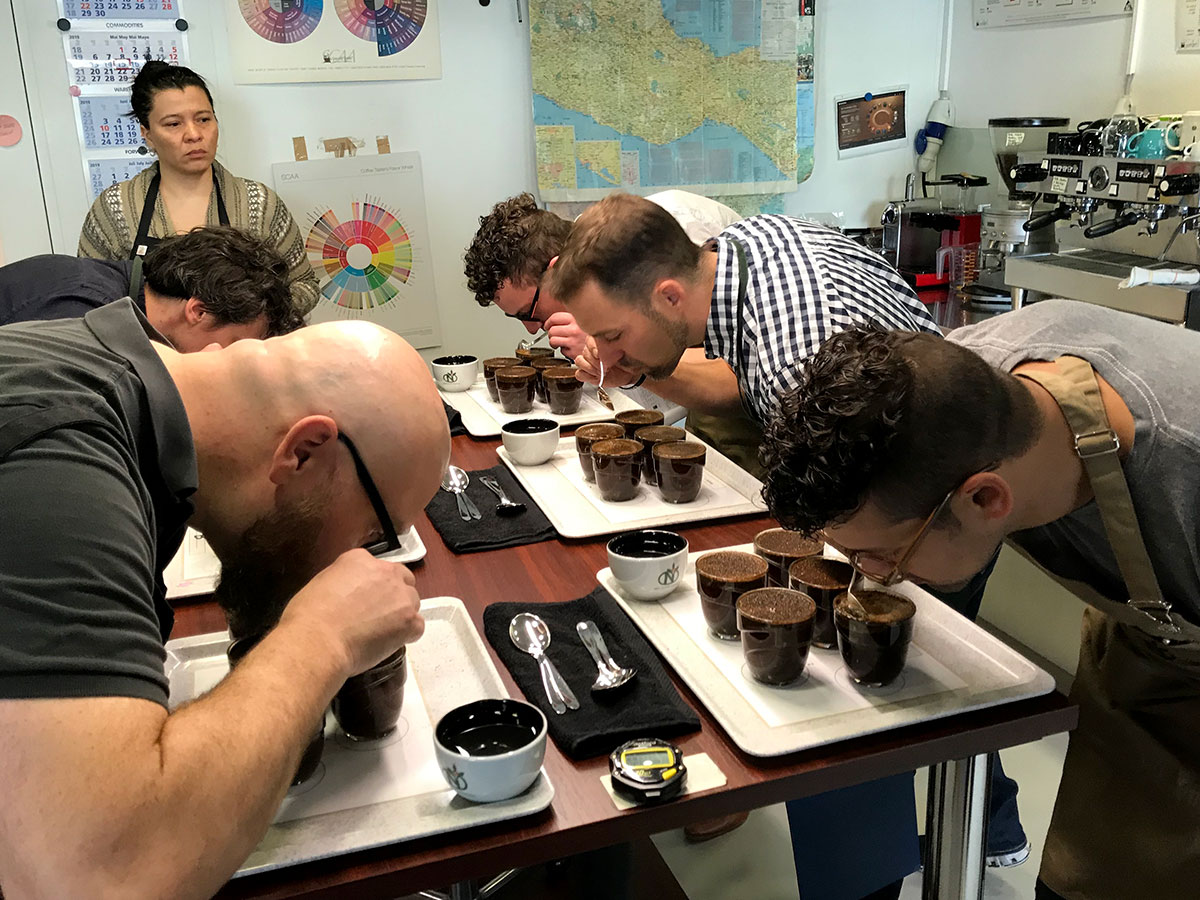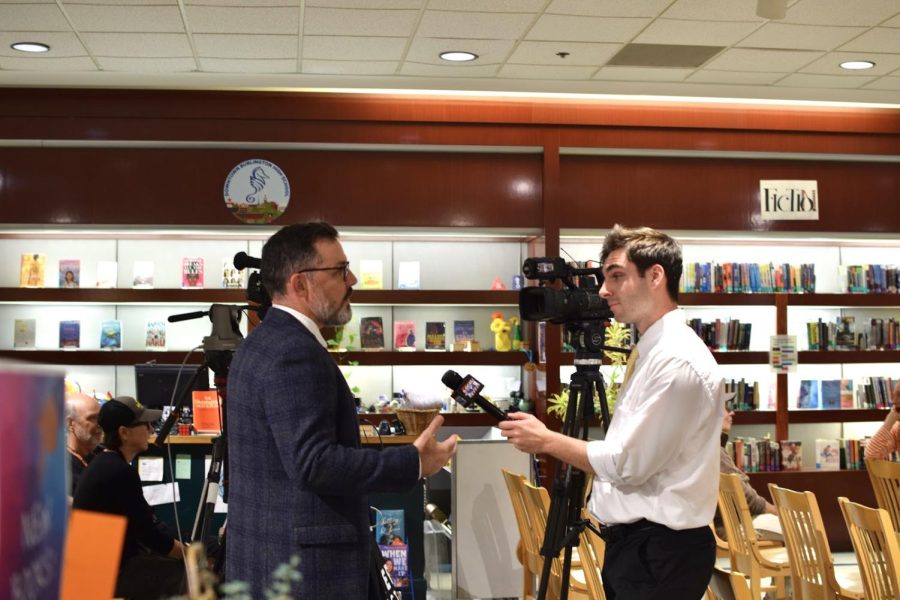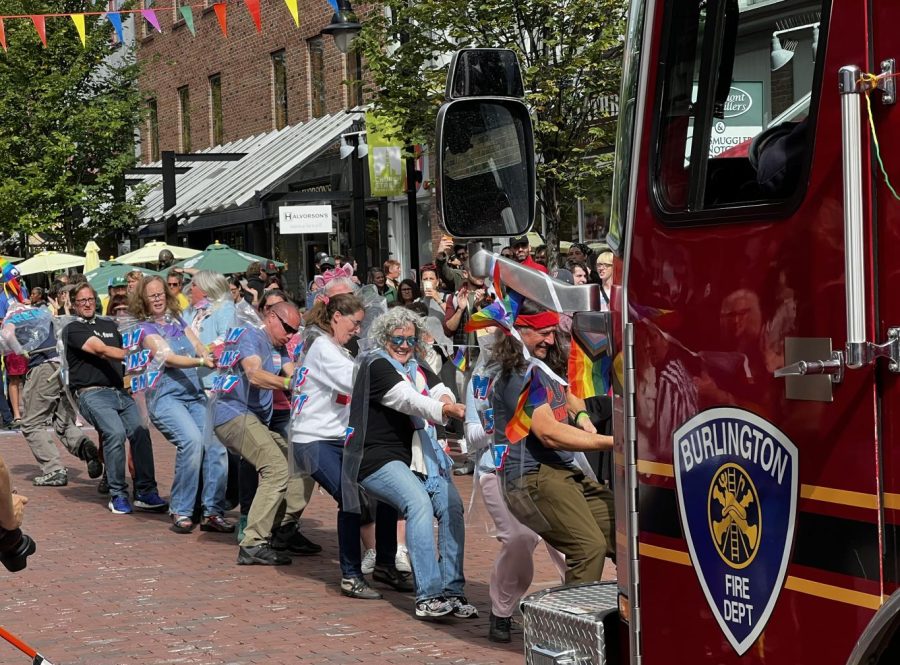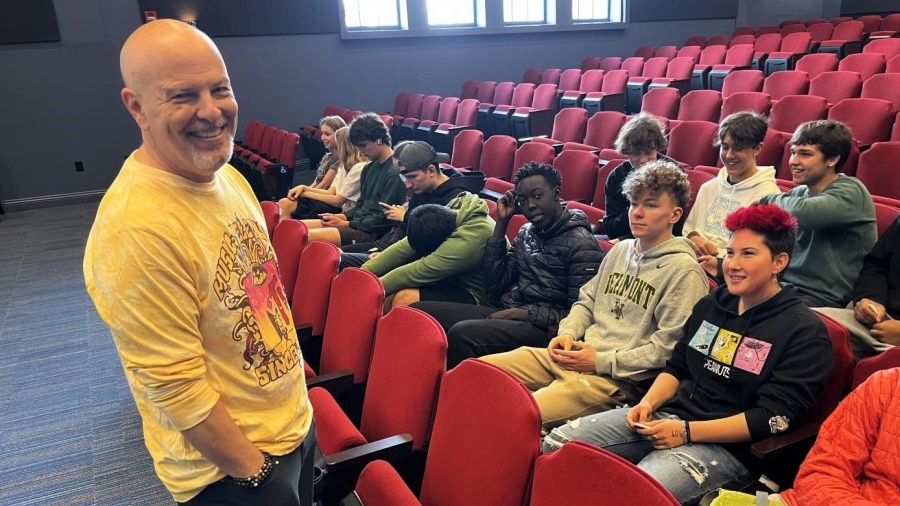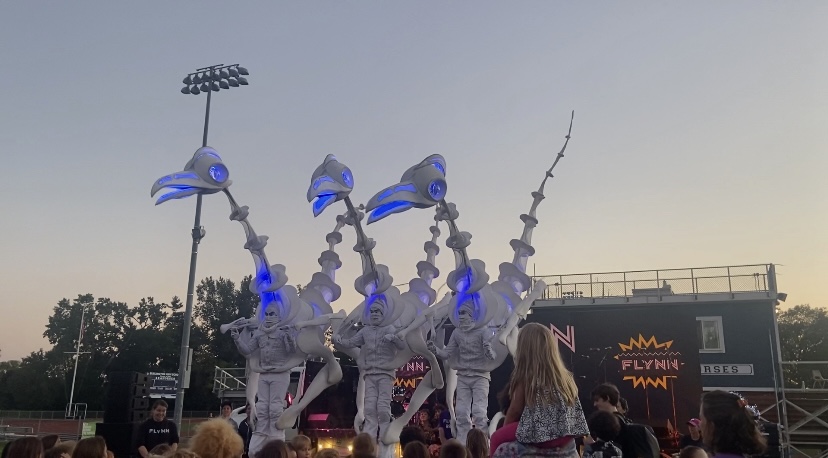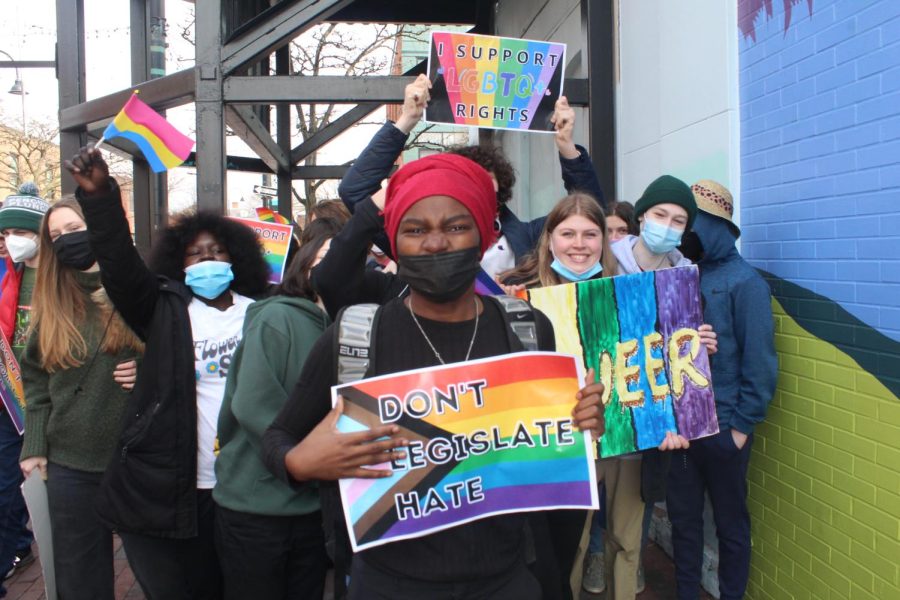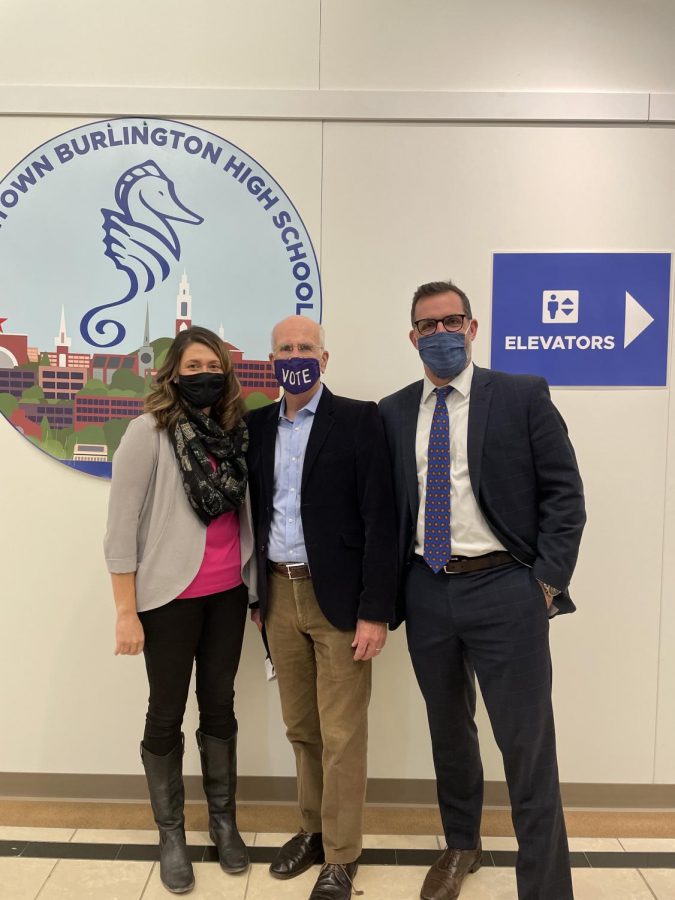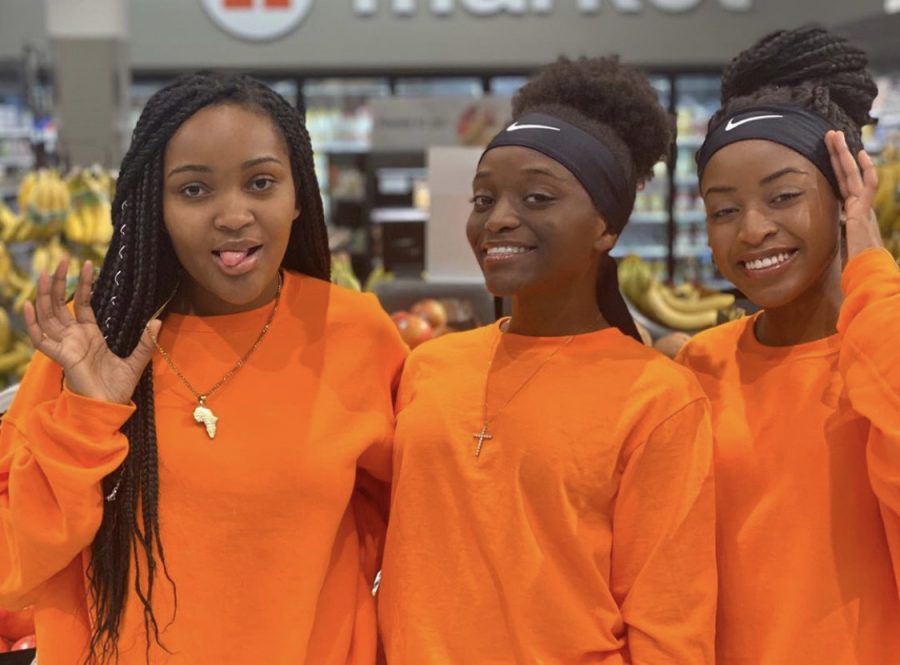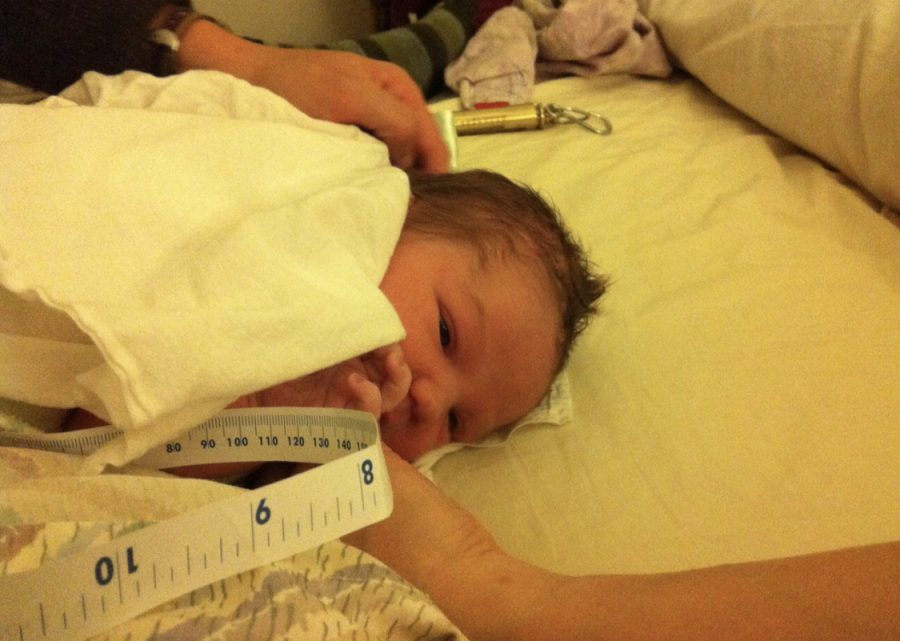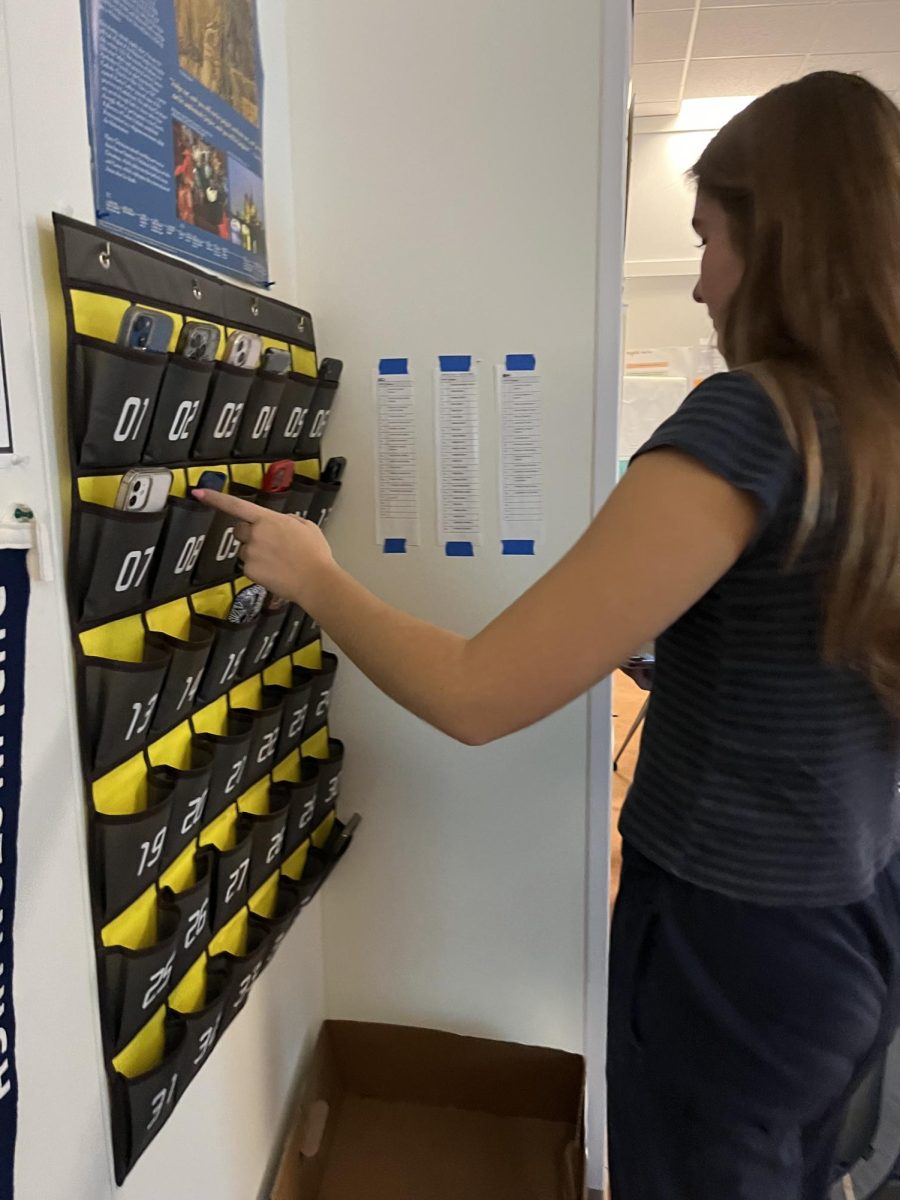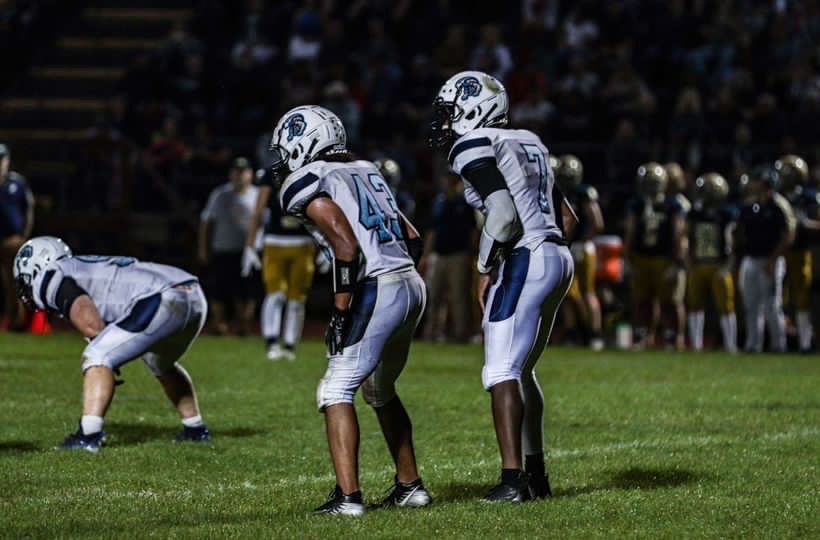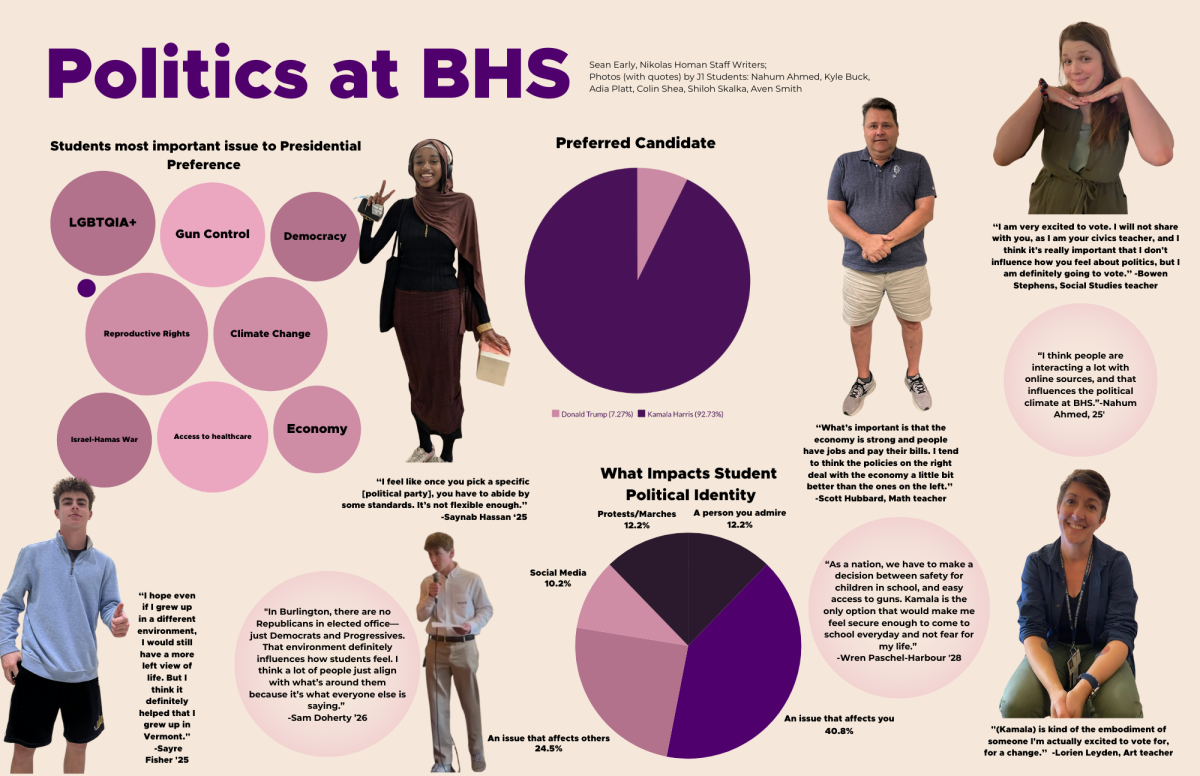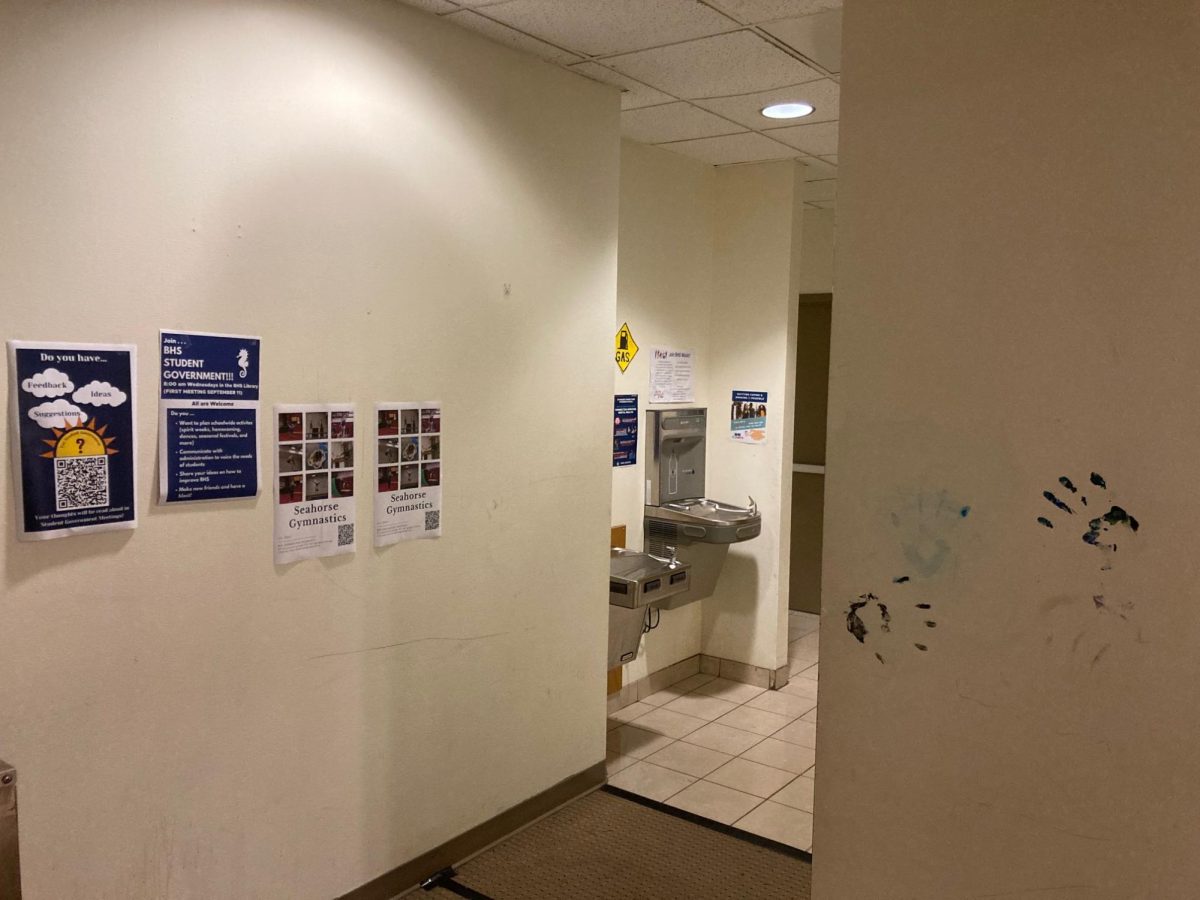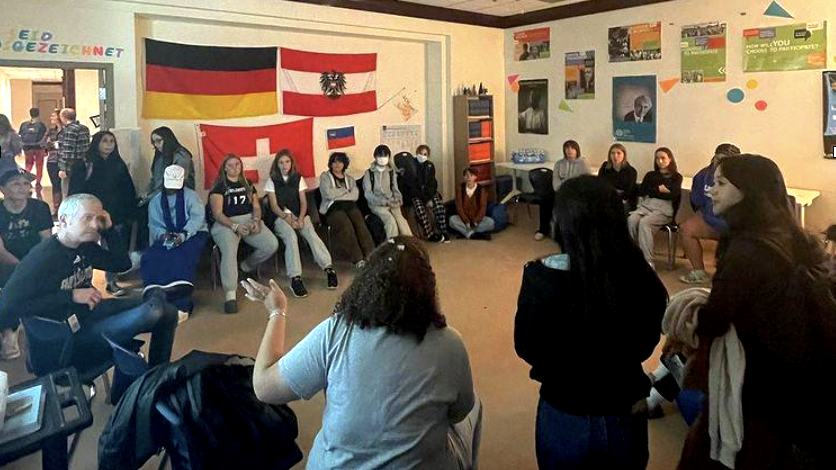In 2016, Colin Kaepernick, former NFL quarterback for the San Francisco 49ers, knelt during the national anthem at his team’s preseason games to protest police brutality and minority oppression in America. Kaepernick’s peaceful protest inspired other NFL athletes, and players from teams across the nation to join his demonstration by kneeling at their own games.
The athletes’ overt political engagement triggered adminstrative backlash. President Donald Trump, outraged by the protests, called for NFL coaches to fire players that did not stand for the anthem.
“When you go down and take a knee—you’re sitting essentially—for our our national anthem, you’re disrespecting our flag and you’re disrespecting our country,” Trump said.
In response to this backlash, over 200 NFL players knelt or sat in solidarity during the playing of the national anthem at games on September 24, 2017.
On October 13th, Burlington High School (BHS) celebrated its athletes at a school-wide pep rally before the football team’s homecoming game. As the national anthem blared through the loudspeakers, the room’s positive energy did not visibly fade. An overwhelming majority of students stood for the song, with many mimicking the BHS football team ‘s traditional anthem stance by placing their hands on the shoulder of a student in front of them.
However, this moment stirred internal turmoil for many in the stands. Students reflected on the current controversy surrounding the national anthem, on their personal relationship with it, and on the actions that they wanted to take in the wake of the NFL protests.
Ella Staats, a BHS Senior, chose to remain seated on the bleachers during the anthem. Staats, who identifies as white, firmly believes that it is her responsibility to act as an ally in advocating for racial justice.
“If that means sitting at the national anthem as a peaceful act of protest, then I will do that,” Staats said.
Alec Rutherford, another BHS senior, identifies as White, Hispanic, and Mexican, and also praises the protesting NFL players.
“I think that what these NFL players are doing is brave. People say that they are disrespecting our country by taking this stand, but I think that taking this kind of stand is the only way you can support the people of your country,” said Rutherford.
As a co-leader of The Burlingtones, BHS’s student-led a capella group, Rutherford felt that it would be inappropriate for the club to perform the national anthem at the pep rally. Instead, The Burlingtones instead sang Vermont’s state song, which was followed by a recorded instrumental version of the anthem.
“I wanted to avoid a strong political stance,” Rutherford said. “Although I commend the NFL players, I did not believe that this was the place for our group to demonstrate political views. The rally was our chance to support Burlington High School, not America.”
Manny Dodson, a BHS junior and varsity football player, disagrees with the claim that the protests are purely an expression of players’ individual beliefs.
“It’s more of larger a political movement,” Dodson, who identifies as black and white, said. “Players have such power over the public. They are not only representing their own values, but are calling attention to national progress that needs to be made.”
However, Dodson believes that as a high school football player, he does not possess the same ability to create change as the NFL athletes.
“If I were to protest at a BHS event, I don’t necessarily think that I’d be doing or changing anything by kneeling,” Dodson said.
Dodson cites peer pressure as the main obstacle preventing him from more seriously considering protesting.
“I stand mostly because it would be too awkward to do otherwise,” Dodson said.
“I just think that I would get hate for kneeling.”
Ophelia Keefe, a junior and member of the BHS dance team, shares Dodson’s fear. Keefe, who identifies as white, struggled to decide whether she should stand during the anthem at the homecoming pep rally.
“I was sitting next to a friend, and we were both initially planning to take a knee. The NFL athletes are using their power to call attention to issues that really matter right now, and we wanted to support them,” Keefe said.
Keefe changed her mind at the last second.
“The whole auditorium was standing up and I didn’t want to call attention to myself,” Keefe said.
Looking back, Keefe regrets giving into peer pressure.
“I kind of wish I took a knee. It’s not unconstitutional. It’s just me showing my freedom of speech for showing support for issues I care about,” Keefe said.
For Staats, the value of that asserting her freedom of speech outweighs the vulnerability that she experiences while sitting.
“[Sitting] is a little alienating because everyone else around is standing. But no one else seems to care,” Staats said.
Staats is grateful that she is part of a community that respects her decision to sit during the anthem.
‘I heard about a school that forces their players to stand for the anthem and I just think that’s not free speech and that is not okay,” Staats said. “Forced patriotism is fascism.”
Staats urges Americans to think more deeply about the meaning of the national anthem before choosing to stand.
“I feel like a lot of people just stand as a compulsive act. They don’t really think about why they are standing or consider where our country has been, where it is going, and where it is at now,” Staats said. “I’m not done being introspective and thinking about whether or not I really want to stand during the anthem.“
Rutherford, on the other hand, welcomes the opportunity that standing at the national anthem provides him to show appreciation for his country.
“I believe that the United States has many amazing things that we can celebrate, but there are also many problems that need solving. I stand to support my nation with reservations,” Rutherford said.
Manny Dodson holds a more passive view of the national anthem.
“I do know that [the national anthem] means a lot to some people,” Dodson said. “Both of my grandpas were in the military. It’s an important symbol of the country because it represents unity, but I don’t personally think it’s that important. I don’t like having to stand and stuff, because I’m lazy and because it doesn’t have significance to me.”
High schoolers around the country are engaging in similar conflict and dialogue as news surrounding the NFL protests becomes more complex. Athletes from various schools have demonstrated support for the movement by kneeling at their high school’ games, and have received a diverse range of responses from school administrations. On October 28th, two referees walked off the field at a New Jersey high school football game after players peacefully protested during the football game. The school’s athletic director did not comment on the issue but stated that the district policy did allow student-athletes the right to protest.
Jeanne Holson, BHS athletic director, said that administration has not prepared for student protests.
“We haven’t had discussions about the possibilities. The coaches within their own programs may have had discussions,” Hulson said. “The anthem is a tradition at BHS. There is almost this intention of this collective unity that it’s part of, and each program almost has it’s own little tradition that they do. There has never been a situation that says otherwise.”
The Register is continuing to cover the ongoing issues surrounding the NFL protests. We welcome any additional community reflections as we report on this complex issue. If you have an opinion you wish to share, please email The Register at register@bsdvt.org.



